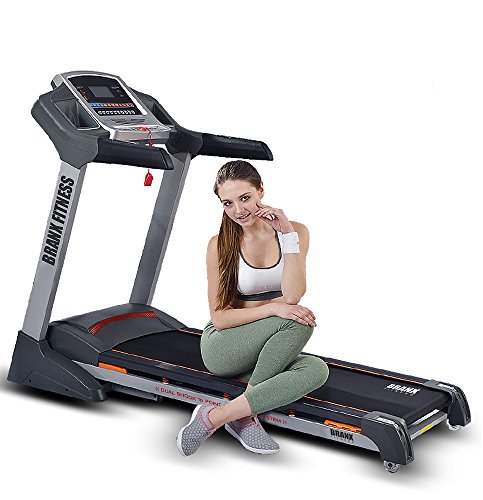7 Small Changes You Can Make That'll Make A Big Difference In Your Treadmill Non Electric
Treadmill Non-Electric: The Eco-Friendly Fitness Solution
In an era dominated by electric devices and high-tech devices, the humble non-electric treadmill sticks out as a beacon of simplicity and efficiency. Frequently overshadowed by their modern equivalents, non-electric treadmills provide numerous benefits that deal with a sustainable way of life and a solid workout. This post will check out the advantages, performance, and variety of non-electric treadmills, making a strong case for their role in contemporary physical fitness regimens.
What is a Non-Electric Treadmill?
A non-electric treadmill, also understood as a manual treadmill, runs without electric power. Rather, it relies on the user's energy to move the belt. This kind of treadmill generally has a curved or flat running surface and a belt that moves as the user walks or runs, thus providing a full-body cardiovascular exercise.
Key Features of Non-Electric Treadmills
Feature
Description
Source of power
Manual operation (user-powered)
Design
Curved or flat treadmill surface
Portability
Typically light-weight and easy to move
Durability
Less mechanical components; frequently made of high-quality materials
Cost
Generally more budget friendly than electric treadmills
Footprint
Normally smaller, making them suitable for minimal areas
Noise Level
Quieter operation compared to electric versions
The Advantages of Non-Electric Treadmills
1. Eco-Friendly
Non-electric treadmills are a sustainable option for fitness enthusiasts. With no electricity intake, they reduce carbon footprints and total energy intake.
2. Cost-efficient
With less mechanical parts and no electrical wiring systems, non-electric treadmills are typically more cost effective. This makes them accessible and appealing to individuals aiming to maintain a healthy lifestyle without breaking the bank.
3. Increased Workout Intensity
Because the user powers the belt, they have complete control over their workout's intensity. The harder you press, the more calories you burn. This self-powered function motivates a more engaged workout, pressing limits for a better physical fitness outcome.
4. Compact and Portable Design
Many non-electric treadmills have a light-weight building and construction and smaller sized footprint, making them easy to store and transport. This feature allows users to integrate cardio exercises into various settings, whether at home, in the office, or at a gym.
5. Lower Maintenance
Non-electric treadmills have less moving parts than electric versions, which equates to reduce upkeep expenses and fewer mechanical failures over time.
Types of Non-Electric Treadmills
Non-electric treadmills can be found in various styles to cater to varied fitness needs. Here's a short summary:
Type
Description
Curved Manual Treadmill
Functions a curved running surface area for a natural gait. Exceptional for sprinting and interval workouts.
Flat Manual Treadmill
A simple design similar to traditional treadmills however powered by the user's motion.
Foldable Manual Treadmill
Compact style that can be easily folded and saved away when not in use. my latest blog post for little living spaces.
All-Terrain Manual Treadmill
Designed for outside use, these treadmills typically feature a rugged build and traction control.
Frequently Asked Questions (FAQ)
1. Are non-electric treadmills ideal for novices?
Yes, non-electric treadmills can be suitable for novices. Users can change the strength and speed of their workouts based upon their physical fitness level.
2. Can I utilize a non-electric treadmill for running?
Absolutely! Lots of non-electric treadmills, specifically curved models, are created for running. Their self-powered nature enables users to engage in jogging or sprinting.
3. What kinds of workouts can I carry out on a non-electric treadmill?
Users can take part in different exercises, including walking, jogging, running, interval training, and even hill workouts by adjusting their position.
4. How do I preserve a non-electric treadmill?
Basic maintenance consists of routinely examining the belt for wear, guaranteeing it is focused, and cleaning the surface to avoid particles from impacting motion.
5. Are non-electric treadmills noisy?
Non-electric treadmills tend to be quieter than electric ones, as they do not have motors that can produce noise. Users may still create sound based on their speed and weight.
Tips for Maximizing Your Non-Electric Treadmill Workouts
To get the most out of your non-electric treadmill sessions, think about the following suggestions:
Warm-Up Properly: Always begin with a warm-up session to prepare your body for the exercise.
Integrate Interval Training: Alternate in between high-intensity sprints and moderate walking to boost calorie burn and enhance endurance.
Concentrate on Form: Maintain appropriate posture and form while running to reduce the risk of injury.
Hydration is Key: Keep water nearby to remain hydrated during your workouts.
Track Your Progress: Use a fitness tracker or smartphone to monitor your workout performance and progress over time.
The non-electric treadmill stands out as a long-lasting, eco-friendly piece of workout devices that efficiently deals with both novices and seasoned physical fitness enthusiasts. With its wide variety of benefits, consisting of cost-effectiveness, ease of usage, and portability, it offers a sustainable alternative in the progressing fitness landscape. For those seeking to streamline their workouts while accepting an active way of life, non-electric treadmills might be the best option. It's time to redefine your workout experience away from the distractions of technology and towards the basics that keep you fit and healthy!
